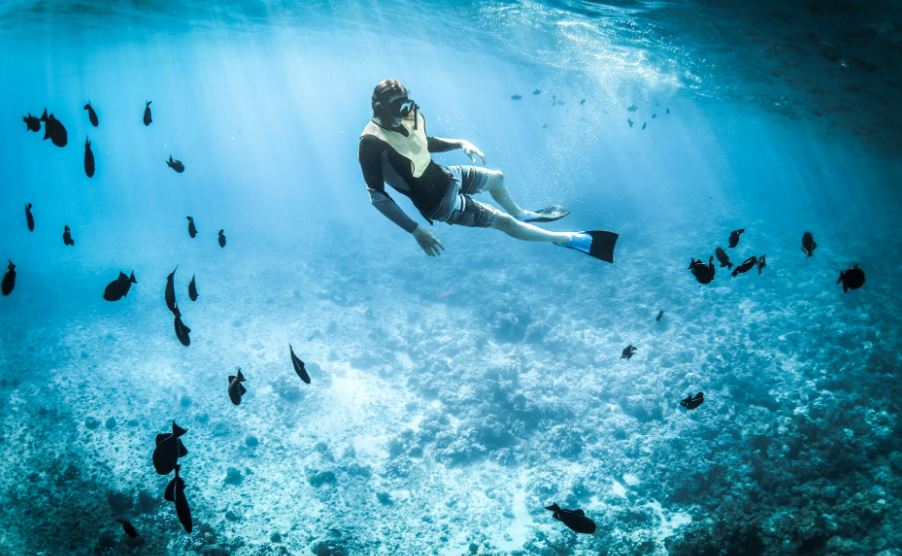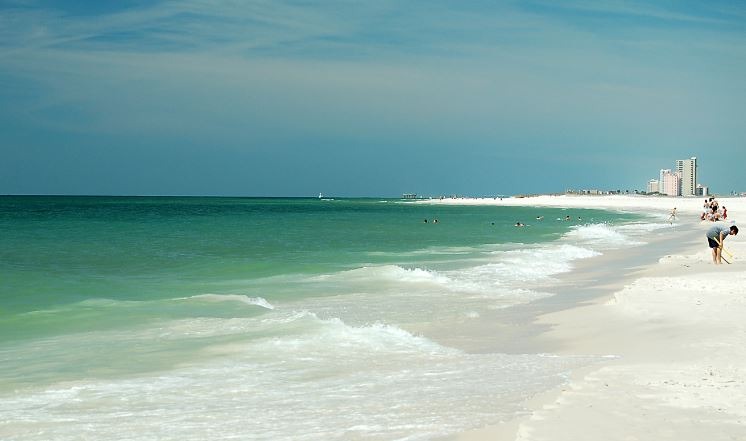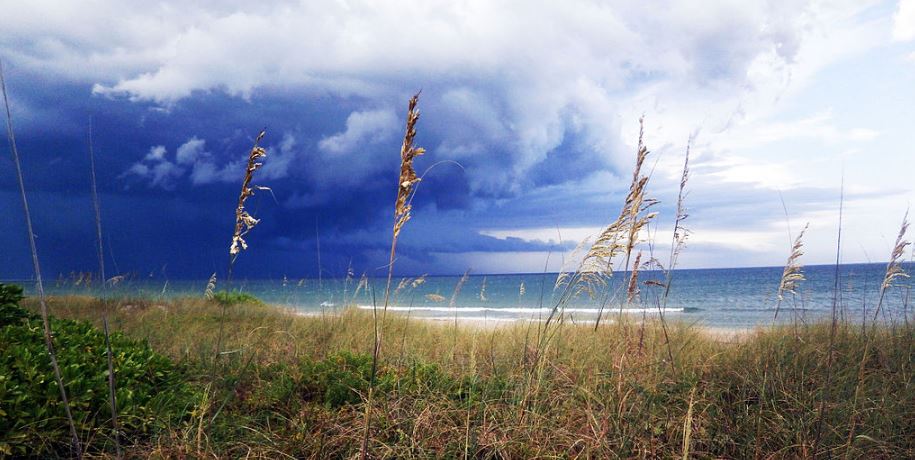Snorkeling along the Gulf Coast is a popular activity during the hot summer months. The clear coastal waters beckon whether you’re on a romantic getaway with a special someone in your life or on a beach vacation with your entire family.
Enjoy a trip to these snorkeling spots in the United States, from Texas to Florida. No matter which outfitter or venue you choose, your snorkeling adventure will undoubtedly highlight your vacation!
Let’s go Gulf Coast snorkeling in these Floridian to Texan spots!
Crystal River Preserve, Florida
Crystal River, located roughly 90 minutes north of Tampa on Florida’s west coast, offers a one-of-a-kind snorkeling experience. You can take a dip with 1,000-pound manatees here. Approximately 400 of these gentle giants can be found in the Crystal River during the winter.
The Crystal River headwaters, known as Kings Bay, have year-round temperatures of 72 degrees, and West Indian manatees migrate here to avoid the cold waters of the Gulf of Mexico in the winter months. Crystal River is among the few places in Florida where you can swim with manatees in their natural environment.
Before snorkelers enter the water with the manatees, tour guides show them a video that teaches them how to act in the water with the manatees. A few crucial rules to remember: don’t surround manatees, don’t disturb a resting manatee, don’t feed manatees, don’t ride, poke, or grab manatees, and don’t trespass into a designated sanctuary.
The Whiskey Wreck, Alabama
The most popular shore-dive in the vicinity takes you to the wreckage of a 200-foot Spanish Rum Runner that sank in less than 20 feet of water. Its easy access and shallow depths make it a popular destination for beachgoers, snorkelers, and novice divers, while its hidden crevices and vibrant marine life make it an exciting site for even experienced explorers.
The Whiskey Wreck is located 150 feet off the beach, near a handy sandbar with a nice spot for gearing up. Its murky depths provide only 10 to 15 feet of visibility, so keep an eye out for nautical neighbors.
Balmorhea State Park, Texas
Balmorhea State Park, the world’s largest spring-fed swimming pool, is a “cool oasis in the high desert” and has crystal-clear water. Visitors can snorkel, swim, or relax at this breathtaking park in West Texas.
The desert wetlands here are a sanctuary for endangered fish and an area snorkelers from around the world visit. Apart from participating in the numerous water-sports activities, you can also attend enlightening programs on the park’s history and nature.
Egmont Key State Park, Florida
Egmont Key is a Tampa Bay island that transports visitors to another era. Tourists can reach this 400-acre state park in St. Petersburg via a short ferry ride, which is home to various seabirds and gopher tortoises.
Guests can snorkel and see the underwater ruins of Fort Dade, built in the late 1800s as the USA prepared for the Spanish-American War. Excursions to Egmont Key are led by companies such as Dolphin Snorkeling Cruise and Island Bay Adventures, and snorkelers are likely to see dolphins pop up out of the water on the boat ride to the island.
Windy Point Park, Texas
Windy Point Park is among Central Texas’s most popular diving spots, and numerous instructors and expert divers recognize it. It has many Underwater Rescue Operations. The park is situated on the grounds of Lake Travis and offers a wholly different experience.
While snorkeling in Windy Point Park, most snorkelers discover boat wrecks and remarkable metal sculptures of divers, sharks, manatees, and sea turtles. Divers with advanced training are welcome to explore the deep underwater canyon wall!
Bathtub Reef Beach, Florida
Bathtub Reef Beach, situated at the northern edge of Hutchison Island in Martin County, is scenic and family-friendly. The beach’s name comes from the bathtub-calm conditions formed by the reef system from off the shore. The reef is home to a diverse range of sea life, such as endangered sea turtles.
The Jetties, Alabama
The jetties are concrete and rock structures that protect Perdido Pass from the Gulf’s currents and tides, and they are home to a diverse range of marine life that swims in and around the shallow waters. As a result, they are a famous destination for fishing, snorkeling, birdwatching, and beach diving.
The jetties are accessible from Alabama Point Beach’s shores. With public restrooms and plenty of parking nearby, the jetties provide a dive that is as convenient as it is enjoyable. There are also boardwalks leading to the water, although the distance may make it a difficult trek if you’re carrying equipment.
When diving in the jetties, you might see octopus, crabs, stingrays, sea urchins, sharks, and many tropical and local fish. Even though the water level is only nine to twelve feet, the area is densely populated with anglers and passing boats, making it ideal for experienced divers. Schedule your dive with the incoming tide for the best experience; you should leave an hour or more before peak time.
The Texas Clipper, Texas
This is a multilevel dive site that only a certified and experienced snorkeler can explore. The Texas Clipper is a magnificent experience that you can compare to a massive museum displaying vibrant underwater life.
Expert divers will need to make several trips to appreciate this snorkeling spot’s unique experiences truly. If you are a master in this sport and plan a trip to Texas, don’t miss out on this one location that will captivate your time in the United States.
Orange Beach Snorkeling Reefs, Alabama
Orange Beach holds three artificial snorkeling reefs, also recognized as circalittoral reefs, where tourists can immerse themselves in a thriving underwater environment. Various nautical and parasitic marine life play, live, and feed in these limestone and concrete reef systems. The reefs, which are only a few hundred feet offshore and have average depths of eight feet, offer a once-in-a-lifetime opportunity to see the life beneath the Gulf of Mexico waves.
Orange Beach Snorkeling Reefs are accessible from points near Alabama Point, Romar Beach, and the Gulf State Park Pavilion. Poles mark the site boundaries near the shore with mounted red lights, but they may be turned off in the sea turtle nesting season.
The Gulf Coast’s coastline has some of the best snorkeling globally, from some of the best snorkeling spots in Florida to the Orange Beach Snorkeling Reefs and beyond. These are among the best places to swim with manatees, relax in the soothing water, or interact with stingrays and tropical fish.




